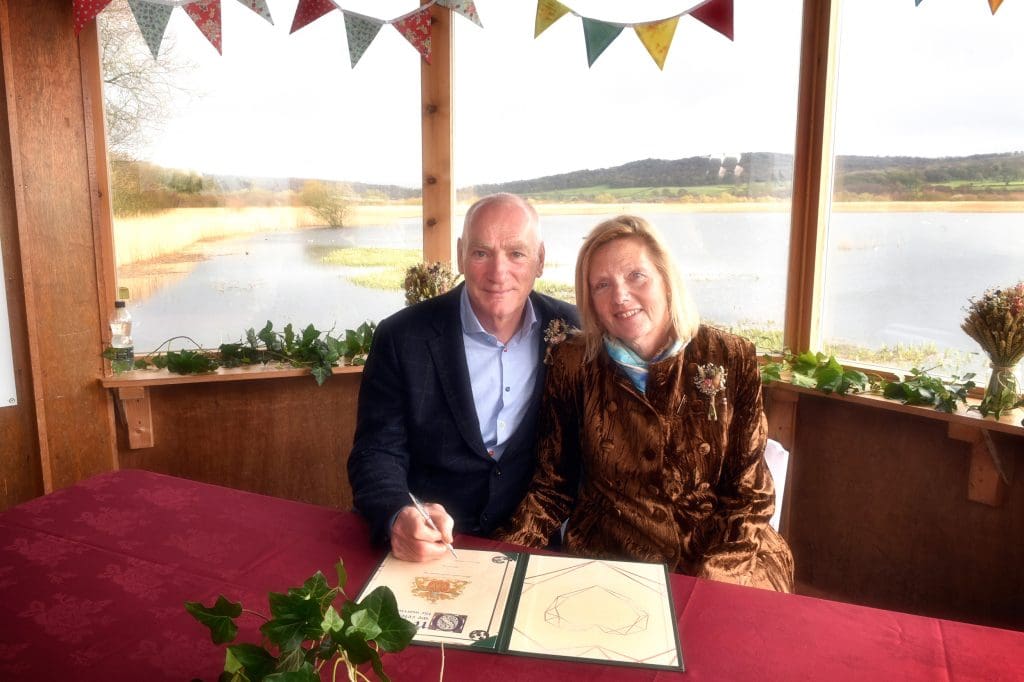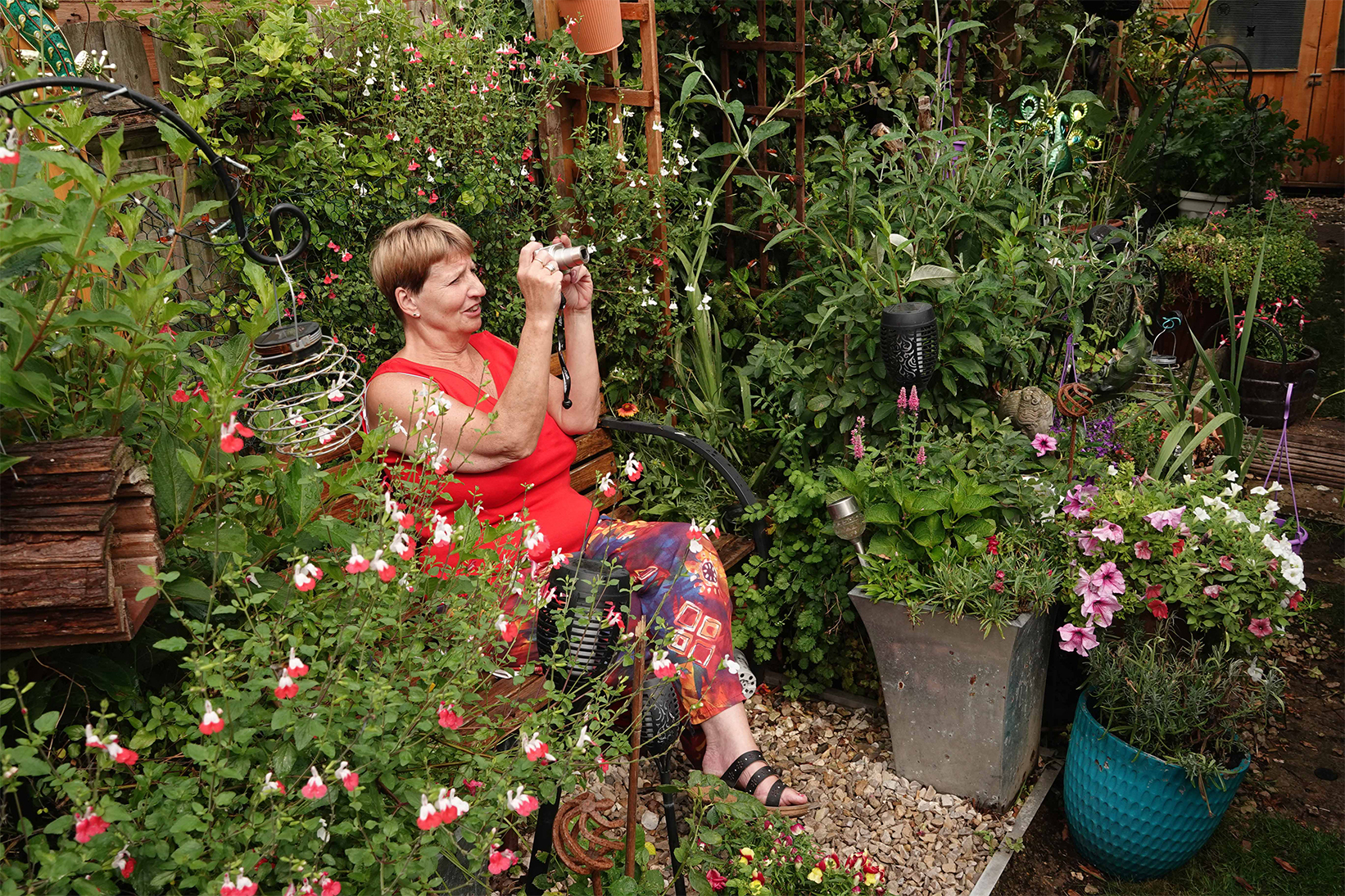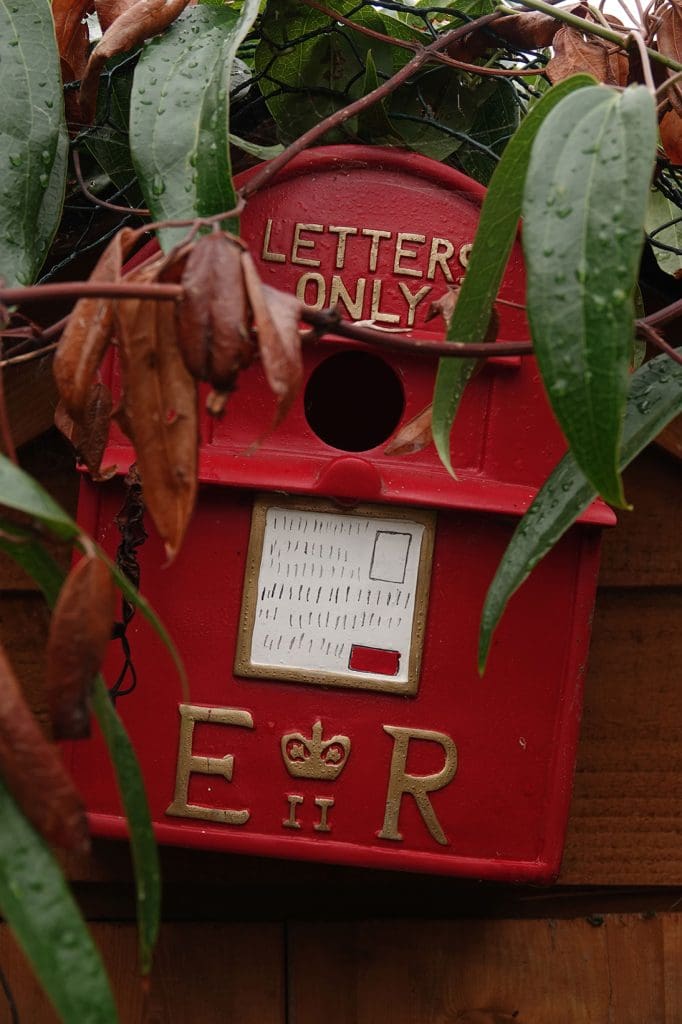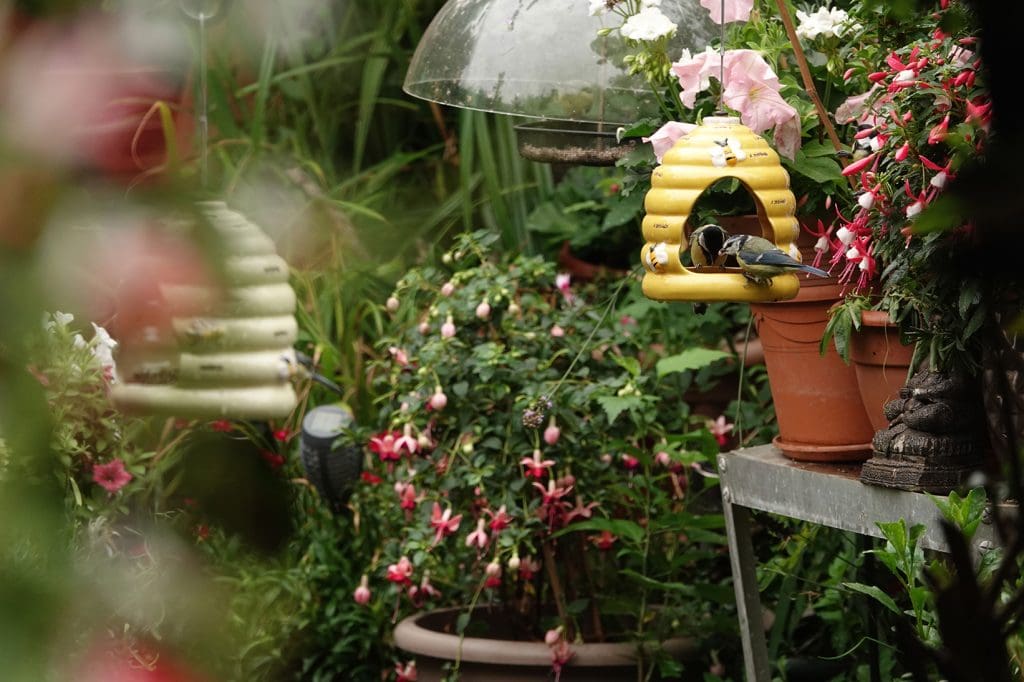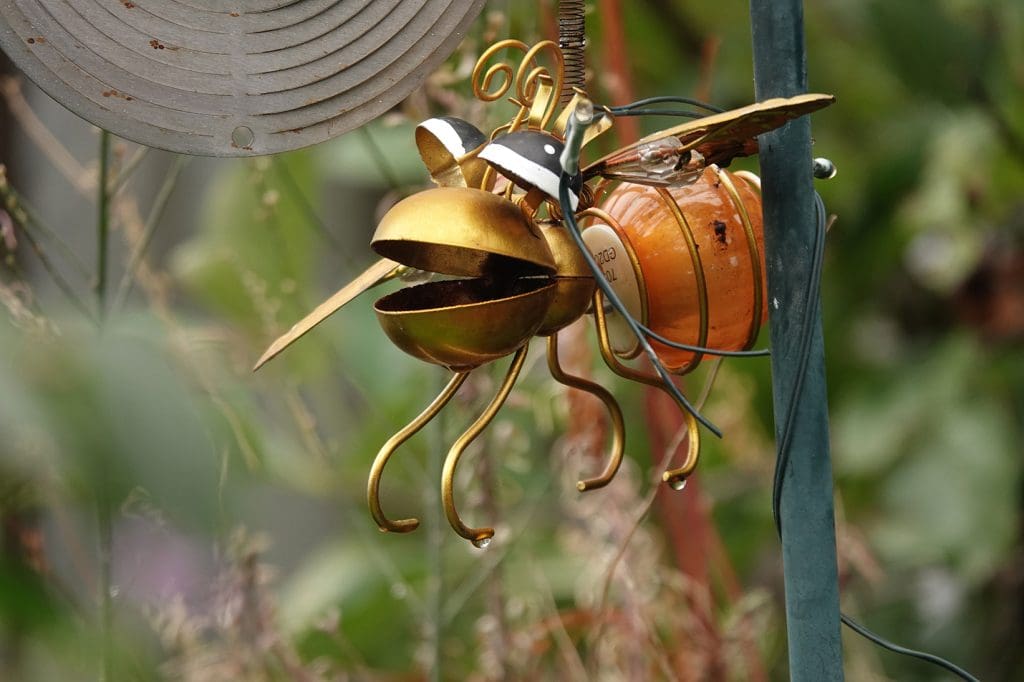Of all the gardens I have visited, none have been quite so full of birds as Babs’ garden in Sevenoaks, Kent. It is only three metres wide by 30 metres long, and is situated in a built-up area just off a main road, but on the August day I visited it was thronging with Blue Tits, Great Tits, Dunnocks, Nuthatches, Song Thrushes and more.
What’s more, most were incredibly tame. “I call them my crazy bunch,” Babs says. “They sometimes even perch on my head! There are so many I find it almost impossible to count them when the time comes for the Big Garden Birdwatch.”
As we meander up the garden, a Robin comes and sits next to us. “That’s Pat,” Babs says. Yes, all the regulars are given names, and why not! There’s Champ the Blackbird, Winston the Hedgehog, even Ratatouille who is – yes, you’ve guessed it – a Brown Rat!
The first impression of the garden is of a lush green corridor, with a path that winds through the middle of shrubs and climbers that, in places, close in over the top of you. Walking up the garden is like a mystery tour.
Yet it was just mud and gravel when Babs arrived here over 30 years ago.
“The first thing I planted was the grapevine, and I then built the pergola. A friend put in some steps and I got a bench because I wanted to sit and watch what was happening. And I’ve just worked my way from there; it has all evolved.”
For Babs, it is all about filling every available space. She works in Sainsbury’s and brings home the unwanted plants from the store that have ‘died’, nurturing them back to life.
‘Nothing will ever go hungry or thirsty in this garden!’
Prior to that, she was a landlady, and you can clearly see that instinct in how she attends to the needs of her garden customers. “Nothing will ever go hungry or thirsty in this garden!”
I wondered where her love of nature comes from. “I lived in Africa as a child where there was a simplicity of life.
It meant you always had birds and nature around you.
How to…
Take cuttings
So many of Babs’ garden plants were created by the cheap and easy method of taking cuttings. All sorts of plants can be successfully propagated like this, and Salvia ‘Hot Lips’ is one of the easiest to try. Babs is
so experienced she just breaks off lengths and sticks them in existing pots.
- Using sharp secateurs, cleanly cut about a pencil length of non-flowering stem just below a couple of leaves.
- Remove the lower leaves, leaving just a few at the top.
- Insert the stem down the side of a pot of gritty free-draining compost.
- Keep watered but not soggy, in a bright but not sun-baked position.
- It should start to root within weeks.
I now have two of Babs’ Salvia ‘Hot Lips’ cuttings growing happily in my garden and attracting hordes of bees!
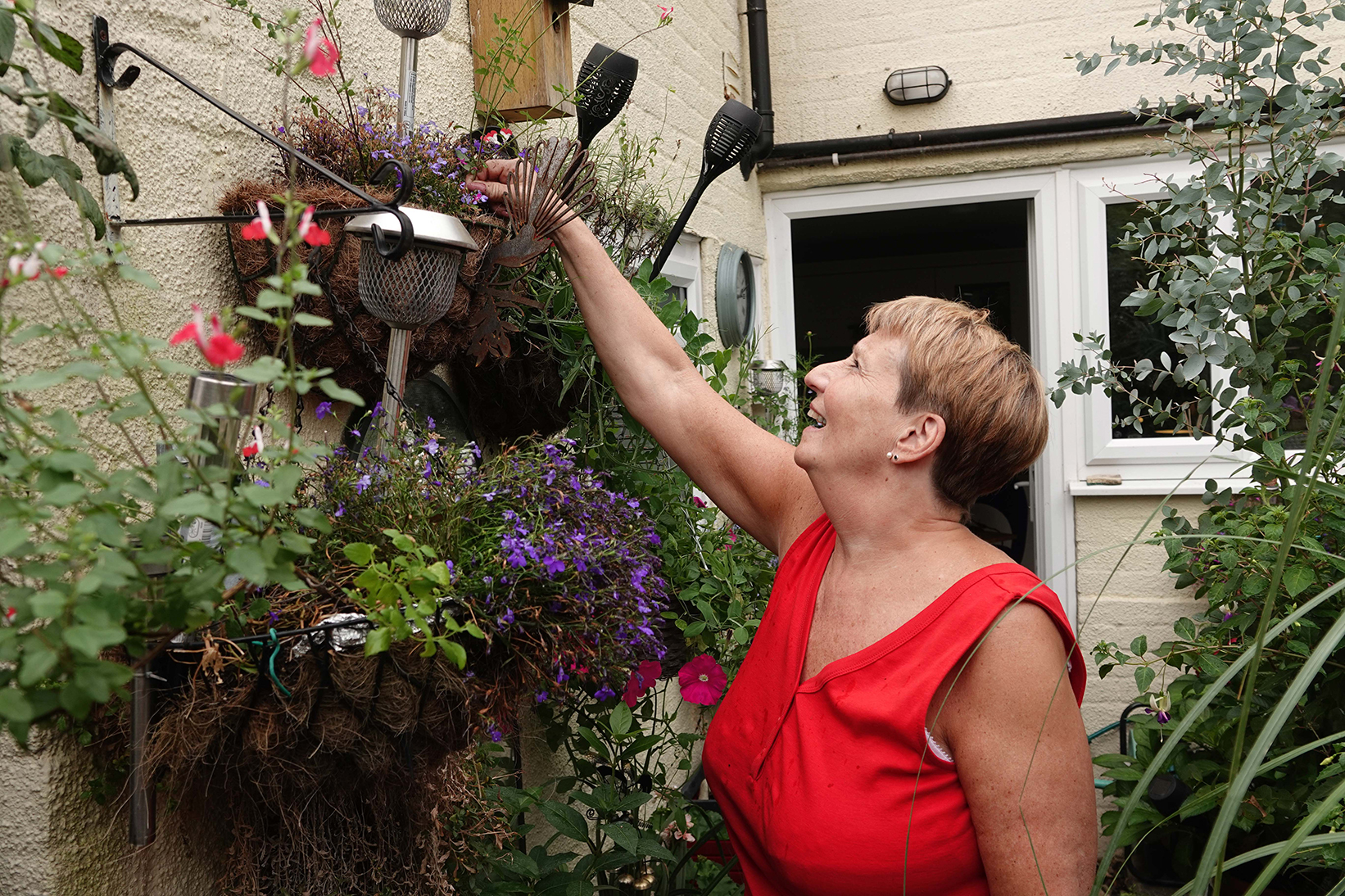
Babs tending her hanging basket. Photo: Adrian Thomas
Gardening tips
What to grow now
Salvia x jamensis ‘Hot Lips’
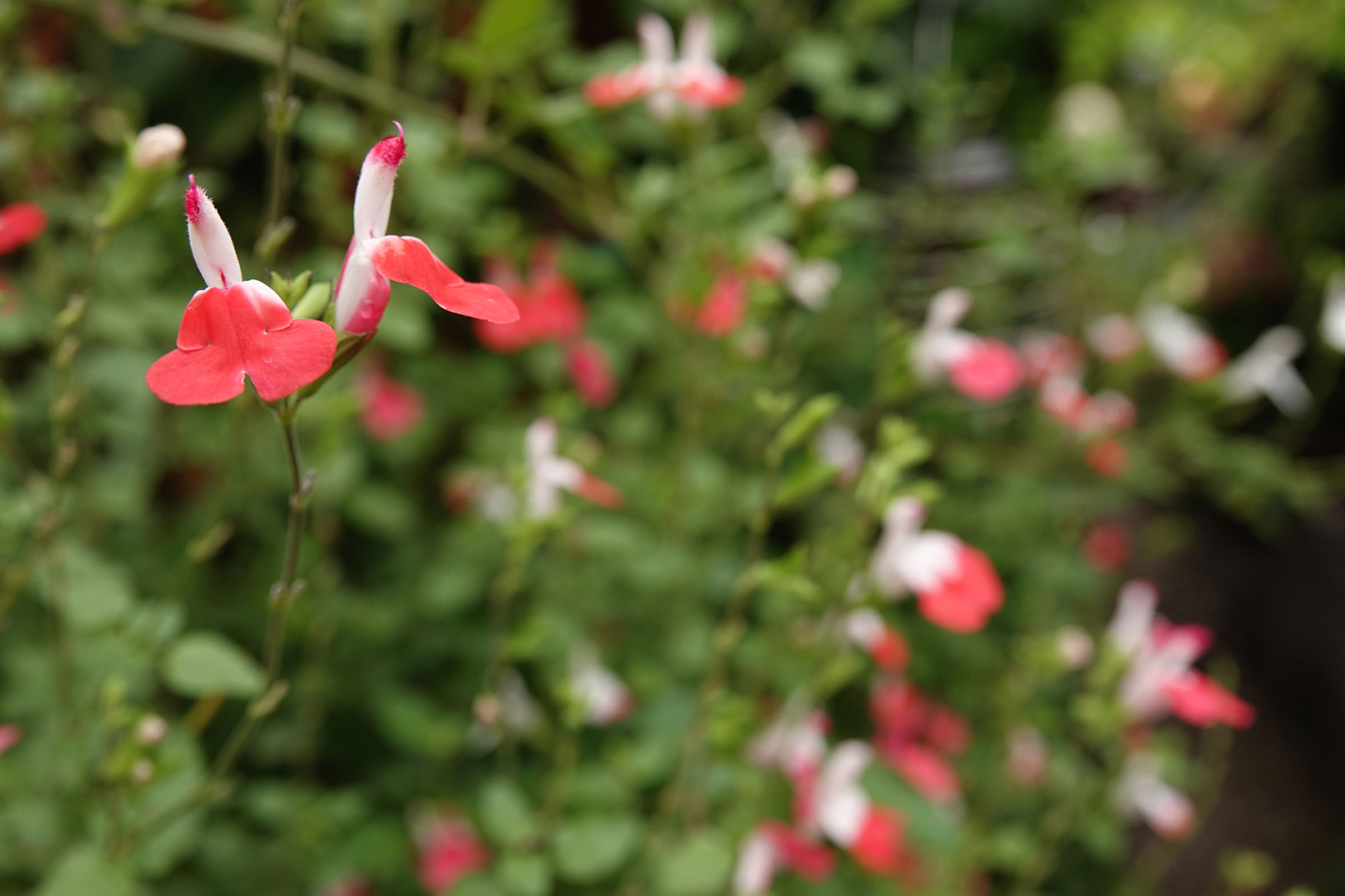
Hot lips. Photo: Babs New
This is Babs’ favourite plant for wildlife because it is such a hit with the bees and yet is so easy to grow. And it looks – and smells – great, too!
- Salvia x jamensis is a naturally occurring hybrid from north Mexico, but has been further cultivated to create a range of flower colours, including deep purples and rosy pinks.
- ‘Hot Lips’ is very popular because it has attractive, bi-coloured flowers, white with the lower petals a vivid lipstick-pink.
- It grows into a low, woody shrub about 60cm high.
- It is one of the hardiest of the Salvias, and will survive outside over winter in most places most years, although it is worth taking cuttings each autumn just in case.
- It does best in a sheltered, sunny position in a free-draining soil. It is suitable for growing in large pots.
- It benefits from a good water once a week in hot weather.
- Nectar-rich flowers are borne from June right through until October.
- Prune lightly in spring to establish shape. Deadhead to prolong flowering.
Wildlife gardening ideas: growing up!
As Babs ran out of space to grow plants and flowers at ground level, she realised that she needed to grow upwards.
She has found that this is especially beneficial to her birds: “They love plants with height. It is their starting point for coming down into the garden.”
You can achieve this in a garden with trees and shrubs, but consider planting climbers, too, which can wind their way up and through other plants and are great at cloaking fences and walls.
Natives include Honeysuckle, Ivy and Wild Clematis, but some garden climbers can be just as valuable such as climbing roses and grapes.

Beehive bird feeders in garden. Photo: Babs New

Nature on Your Doorstep
Nature on Your Doorstep is our flagship project, engaging as many of you as possible with helping wildlife in your outside space, whether that be a garden, balcony, window box, allotment or community project. Check out our webpages for advice and inspiration, and start your journey with us:
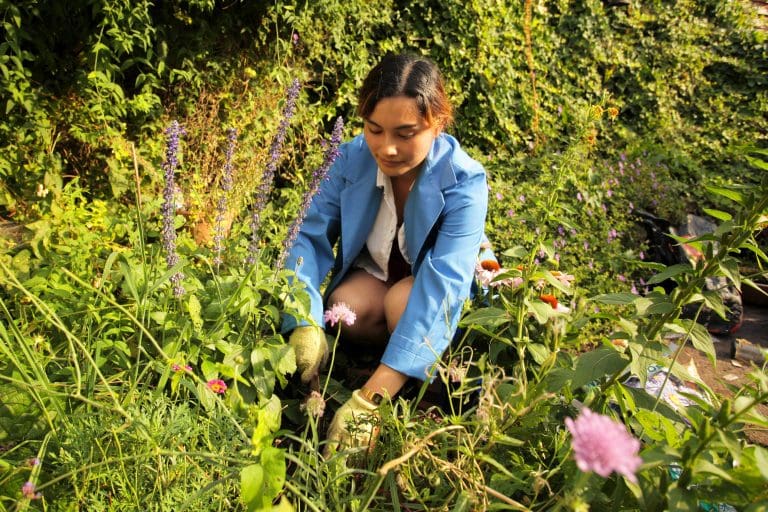
Woman gardening. Photo: Rob Carmier (rspb-images.com)
You might also like
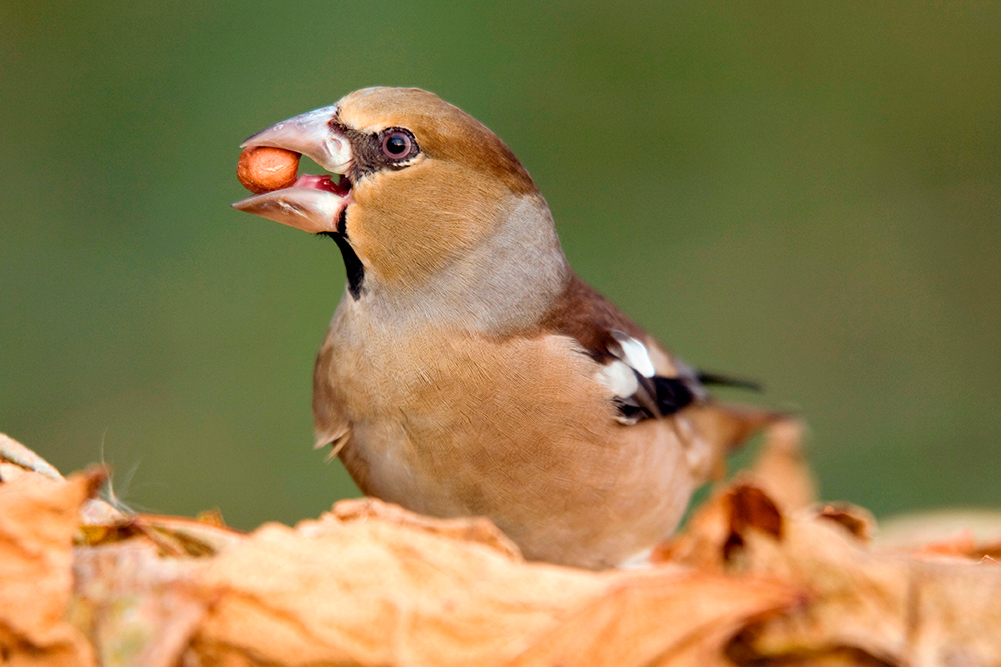
Your questions – autumn/winter 2023
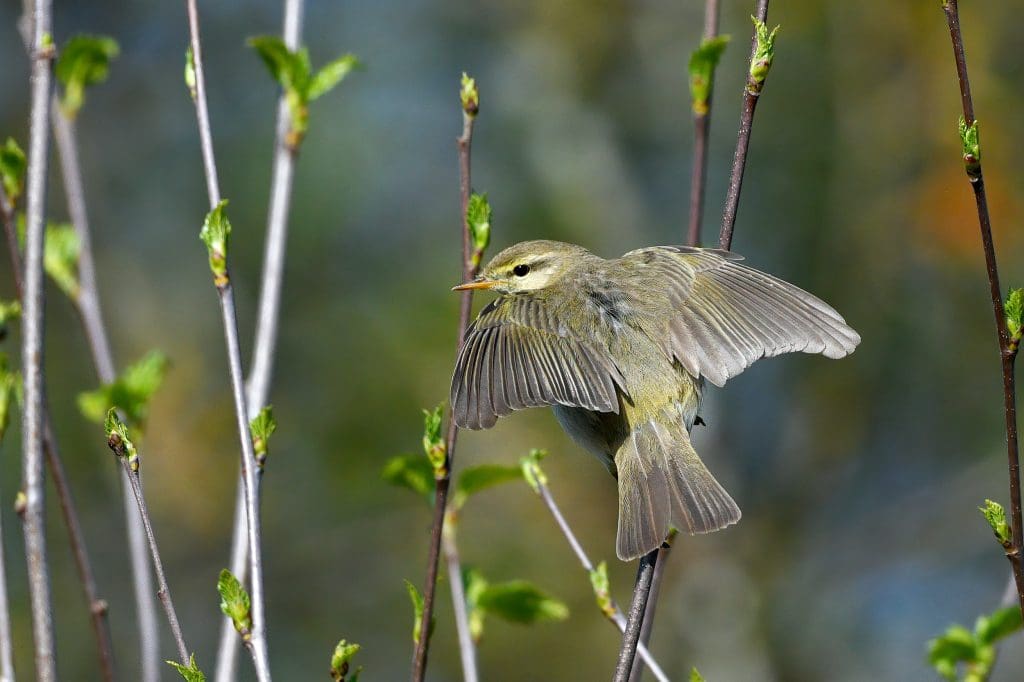
Comment: Something is missing
